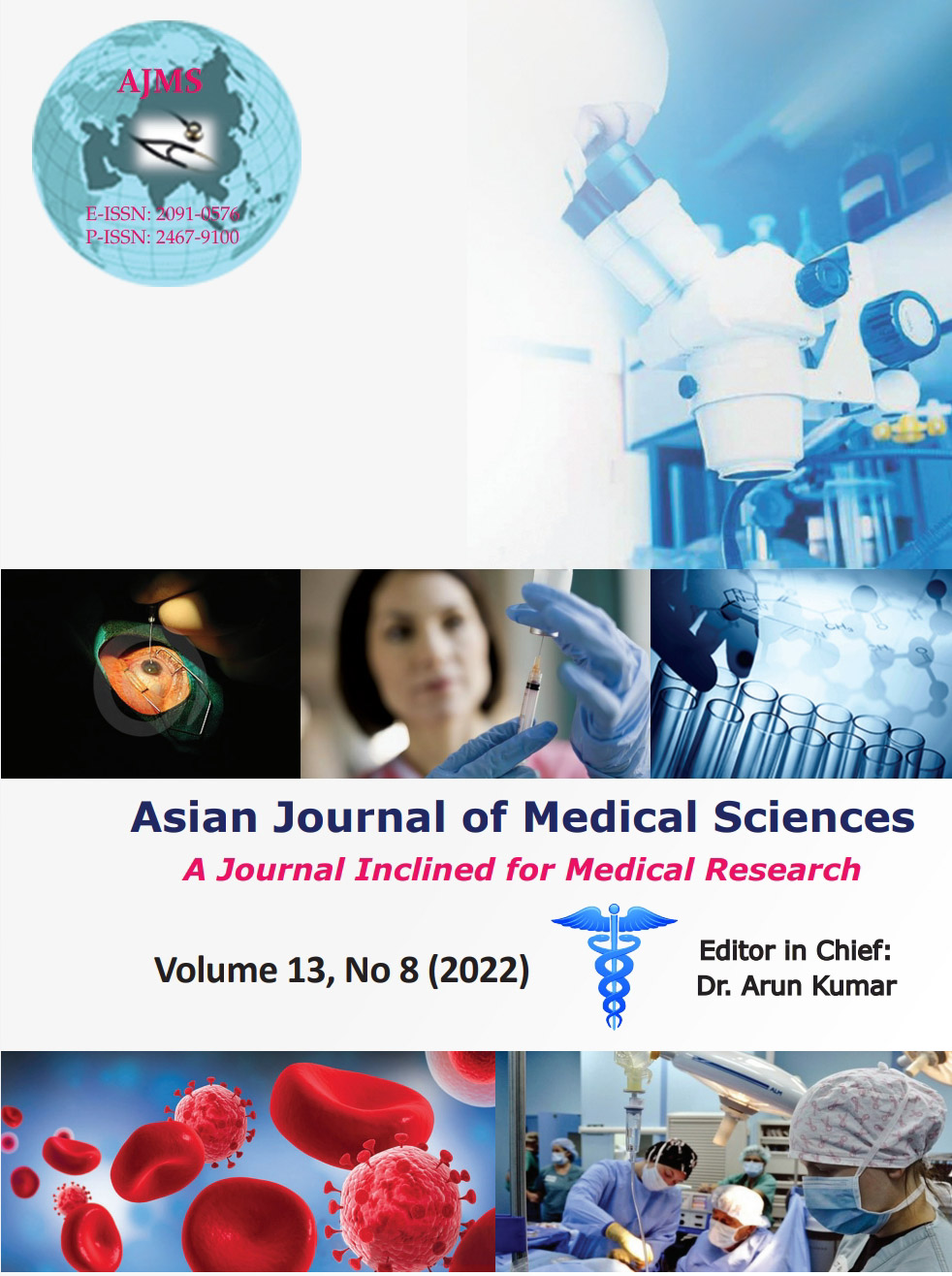Clinical and radiological outcome of arthroscopic Bankart repair in traumatic anterior glenohumeral instability with all-suture anchors
DOI:
https://doi.org/10.3126/ajms.v13i8.44395Keywords:
Anterior shoulder instability; Arthroscopic Bankart repair; All-suture anchor; Radiological outcomeAbstract
Background: Arthroscopic Bankart repair has evolved as an excellent treatment option in the management of recurrent shoulder instability as includes minimally invasive approach and significant reduction in perioperative morbidity. Anchor-related complications such as secondary cartilage damage and proud implant position are well described in literature. An all-suture anchor was developed and approved by the Food and Drug Administration in 2010. These anchors are placed into 1.4 mm diameter drilled holes which are smaller than the drill holes used for previously available anchor therefore minimize invasiveness and avoid complication related to metallic and bioabsorbable anchors.
Aims and Objectives: This study to assess early radiological and clinical outcome after labral repair using all-suture anchors with specific consideration for bony reactions at the anchor site on magnetic resonance imaging.
Materials and Methods: Twenty patients underwent labral repair using all-suture anchors were followed up for minimum of 1 year. Functional outcome was assessed on the basis of Rowe score, Constant and Murley score, and the American Shoulder and Elbow Surgeons score. The radiological appearance of bony reaction around the anchor site was judged by the presence of bony edema, tunnel widening (>3 mm), and cyst formation.
Results: A total number of 56 all-suture anchors were implanted in 10 patients. The total Rowe score significantly improved from a mean of 24.4 preoperatively to 92.5 postoperatively. The American Shoulder and Elbow Surgeons score improved from a mean of 47.1 preoperatively to 88.6 postoperatively and the Constant and Murley score improved from a mean of 57.3 preoperatively to 90.6 postoperatively. On post-operative MRI out of 56 anchors implanted, 35 anchors did not display any reactive bone changes around anchor site. In 17 anchors, bone edema around a suture anchor was seen. Tunnel widening >3 mm was seen in four anchors. None of the anchors showed cyst formation around anchor site.
Conclusion: Clinicoradiological outcome after arthroscopic shoulder instability using all-suture anchors was excellent at 1 year follow-up and radiological imaging revealed a good labral healing.
Downloads
127
116
Downloads
Published
How to Cite
Issue
Section
License
Copyright (c) 2022 Asian Journal of Medical Sciences

This work is licensed under a Creative Commons Attribution-NonCommercial 4.0 International License.
Authors who publish with this journal agree to the following terms:
- The journal holds copyright and publishes the work under a Creative Commons CC-BY-NC license that permits use, distribution and reprduction in any medium, provided the original work is properly cited and is not used for commercial purposes. The journal should be recognised as the original publisher of this work.
- Authors are able to enter into separate, additional contractual arrangements for the non-exclusive distribution of the journal's published version of the work (e.g., post it to an institutional repository or publish it in a book), with an acknowledgement of its initial publication in this journal.
- Authors are permitted and encouraged to post their work online (e.g., in institutional repositories or on their website) prior to and during the submission process, as it can lead to productive exchanges, as well as earlier and greater citation of published work (See The Effect of Open Access).




